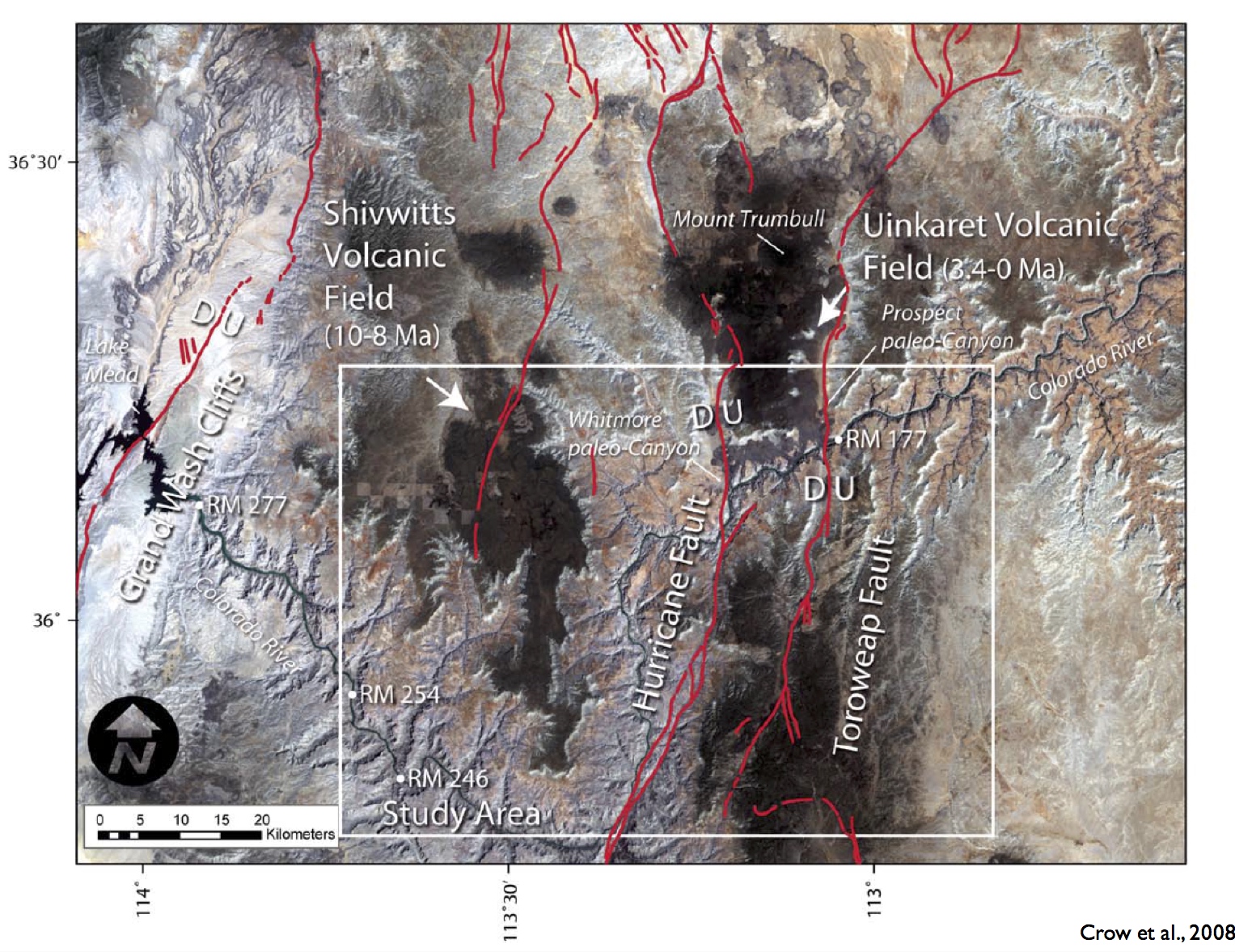When I imagine the Grand Canyon, I imagine deep red sandstones and one of the longest rivers in Western North America winding through the bottom of a deep canyon. Sandstones developed in the ancient Grand Canyon under shallow seas or in primordial river systems, but a particularly spectacular portion of the Grand Canyon’s enigmatic geologic life story includes ancient volcanoes and lava flows, a stark contrast to sunny beaches and ancient seas.
Active volcanoes made up an important part of the geology of the Colorado Plateau and Grand Canyon during the Cenozoic era, and volcanic activity has punctuate this history from 3.7 million years ago until the most recent eruption a mere 1,000 years ago. Even with such a prolonged period of volcanic history, the majority of volcanism in the Grand Canyon occurred between 730,000 and 100,000 years ago, resulting in three major lava flows that are still visible today. All of these volcanic events resulted from the uplift of the Colorado Plateau, immediately north of the Grand Canyon. The uplift of the plateau thinned the earth’s crust, allowing molten rock, magma, to work its way to the surface.
The Uinkaret Volcanic Field is the youngest of the three lava fields visible in the Grand Canyon, and comprises the underlying canyon geomorphology to the north of the aptly named Lava Falls. Complex in its form, the Field is restricted on the east and west by two major faults in the earth’s crust: the Toroweap and Hurricane faults. These two faults restrict the Field so that it makes a rectangle that parallels the Colorado River for 21 km and reaches 80 km to the north.

The lava field itself is the result of at least 150 lava flows that originated from at least 213 individual small volcanic cones. These cones spewed predominantly basaltic lava (similar to current-day lava in Hawai’i), which then flowed to the east and west into deep, ancient canyons that lay under the current day Toroweap and Hurricane faults. To the south, the lava cascaded into the Grand Canyon itself, resulting in a series of major lava dams on the river, creating a series of ancient lakes that lasted for nearly 20,000 years before the river carved a new canyon through them. Such “speedy” cutting of the lava dams could be explained by impurities and weaknesses in the cooled lava dams, making them more susceptible to the erosional forces of the ancient Colorado River.
The approximately 150 lava flows that comprise the Uinkaret Field were the result of four concentrated periods of volcanism in the Colorado Plateau, the most recent of which occurred between 150,000 and 75,000 years ago. These flows produced some of the most commanding volcanic features of the Grand Canyon, namely the Upper Grey Ledge, Esplanade, and Vulcan’s Throne.
Just four miles downstream from Lava Falls, the largest rapid in the Grand Canyon, a 700-foot tall cinder cone and lava flow mark the north of the Canyon’s wall (photo). Together, these two features make up Vulcan’s Throne, which created the last lava dam to have blocked the Colorado River, 73,000 years ago.

Harkening back to the Grand Canyon's former shallow sees, the gentle accumulation of fossils and sediments, tectonic uplifts, and the deep cutting power of the Colorado River, I understand that it is also a place with voices echoing a history of fiery volcanoes and lava flows. To imagine what that process looked like, John Wesley Powell, who first successfully descended the Grand Canyon in the 1800’s, offers us inspiration:
“The canyon was doubtless filled to a height of 1,200 to 1,500 feet, perhaps by more than one flood. This would dam the water back, and in cutting through this great lava bed, a new channel has been formed, sometimes on one side, sometimes on the other....
What a conflict of water and fire there must have been here! Just imagine a river of molten rock running down a river of melted snow. What a seething and boiling of waters, what clouds of steam rolled into the heavens!”
The Grand Canyon is a truly spectacular place in our world, and delving into the complexity of its geologic history only makes it more unbelievable, implausible, and impressive. Imagining its story is a humbling exercise in realizing the sheer scale and depth of time here on earth.
